Dive Details
Location
Date
Sunday 28 December 2014
Time
8:51am - 9:55am
Details
When I first arrived at The Leap it was quite flat. It was an easterly swell but wasn't doing much. By the time I was ready to jump in there were a few large sets coming in: nothing dangerous at all but I couldn't use the low platform and had to slide down the wall. Once in, I descended and headed to the sand line at 60°. Visibility at the start was only 5 metres and it was quite warm but as I dropped into the amphitheatre there was an obvious thermocline and it got quite cold. The visibility improved to around 10 metres, although the water was thick with small jellyfish which made the effective visibility 3 to 5 metres in parts.
I swam to the white male pygmy pipehorse first and found it in its usual spot. The surge and the jellyfish made it difficult to photograph. I could not believe that there were jellyfish between the port and the pipehorse when the gap is so small - that's how thick they were in the water.
I swam across to the rock where the pink male pygmy pipehorse had been and looked carefully but could not find it. I have to assume it has gone. I then checked out the surrounding rocks for more but found none. I did find a medium sized giant cuttlefish near the base of the rock the pink pygmy pipehorse had been on. The jellyfish were starting to thin out so I went back to the white pygmy pipehorse to get some more photos.
I made my way to Seahorse Rock. I initially didn't see "Rosie" on her usual rock (even though she was out in the open) and while looking around the sides of the rock spotted a young pregnant male. It is quite possible that this male is the one we saw partially swallowed by the eastern red scorpionfish a month ago. I can't be certain as I didn't get any photographs of the one that was swallowed but new seahorses don't show up all that often, this new one looks similar and he is already pregnant. I will assume it is the same one and that he escaped and I will call him "Lucky".
On my way to "Southern Cross" and "Pierre" I spotted a weedy seadragon. I believe I have not seen this individual previously. I found "Southern Cross" and "Pierre" on their usual rock.
I was running low on air so I moved quickly from this point. At the start of Seadragon Alley I spotted a male weedy seadragon with eggs. This one I first saw in August and it had eggs then and I last saw it at the end of September without eggs.
I headed up over the rocks to shallow water and started my safety stop nice and early to conserve air. I made it to the Plesiastrea colonies as my 5 minute safety stop ended with over 40 bar. I ascended and exited at The Steps which was quite easy.
Seas
Surgy
Visibility
5-10 metres
Duration
63 minutes
Maximum depth
21.5 m
Average depth
16.6 m
Water temperature
15.7°C
Dive Profile from Citizen Hyper Aqualand
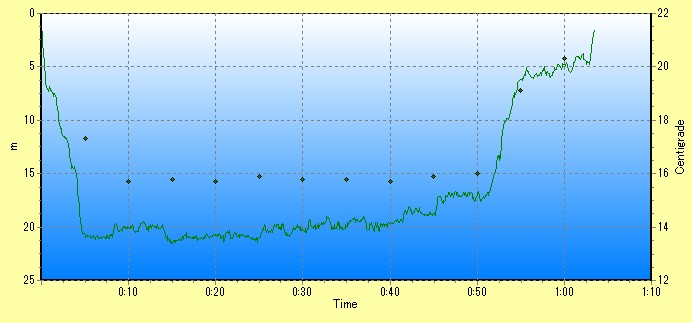
Tides at Botany Bay AEDT
Note that tides at dive site may vary from above location.
High
2:08am
1.45m
Low
8:00am
0.52m
High
2:13pm
1.59m
Low
8:48pm
0.34m
Camera gear
Camera
Nikon D7000
Lens
Nikon AF Micro-Nikkor 60mm f/2.8D
Housing
Ikelite 6801.70
Lens port
Ikelite Flat Port 5502.41
Strobe
2 x Ikelite SubStrobe DS161
Photographs
Depth information, where present, indicates the depth of the camera when the photograph was taken and can be used to approximate the depth of the subject.
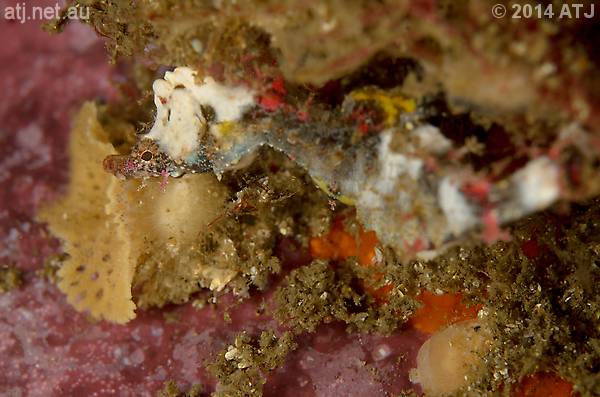
Male Sydney pygmy pipehorse, Idiotropiscis lumnitzeri. 21 m.
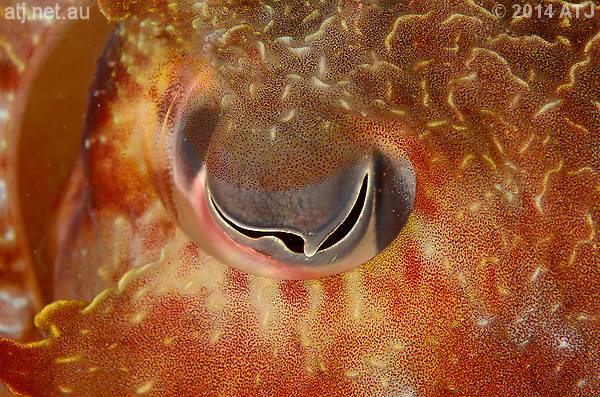
Eye of a giant cuttlefish, Sepia apama. 21.2 m.
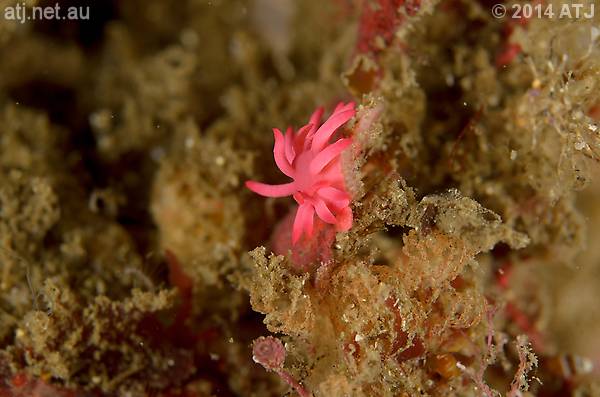
Nudibranch, Okenia hallucigenia. 20.8 m.

Male Sydney pygmy pipehorse, Idiotropiscis lumnitzeri. 21.1 m.

Female pot-bellied seahorse, Hippocampus abdominalis, ("Rosie"). 19.3 m.

Female pot-bellied seahorse, Hippocampus abdominalis, ("Rosie"). 19.1 m.
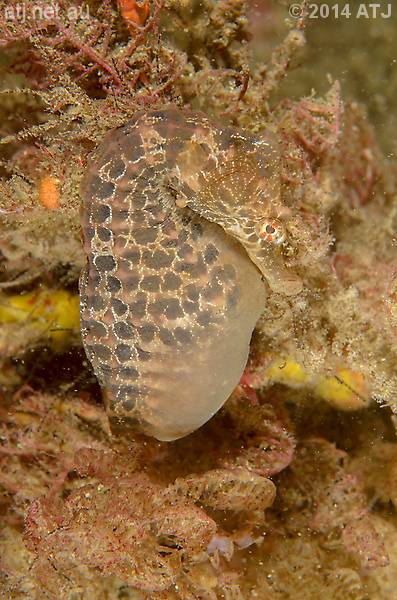
Male pot-bellied seahorse, Hippocampus abdominalis, ("Lucky"). 19.7 m.
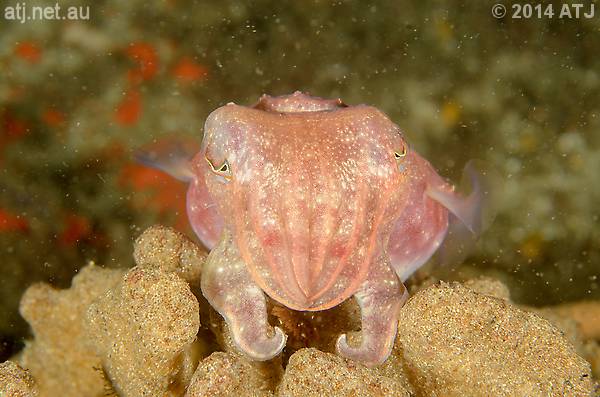
Reaper cuttlefish, Sepia mestus. 18.6 m.

Weedy seadragon, Phyllopteryx taeniolatus. 18.8 m.

Weedy seadragon, Phyllopteryx taeniolatus. 18.8 m.
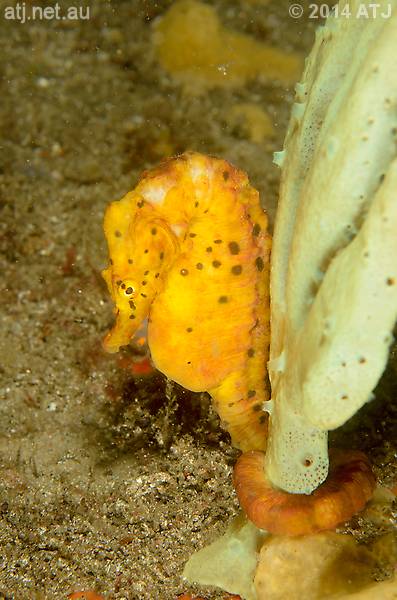
Female pot-bellied seahorse, Hippocampus abdominalis, ("Southern Cross"). 17.6 m.

Male pot-bellied seahorse, Hippocampus abdominalis, ("Pierre"). 16.9 m.
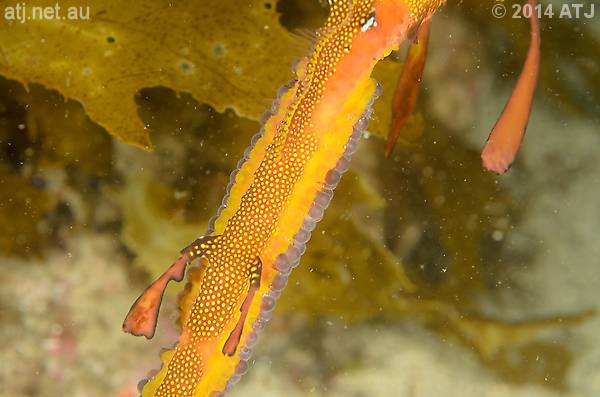
Eggs on the tail of a male weedy seadragon, Phyllopteryx taeniolatus. 17.5 m.

Male weedy seadragon, Phyllopteryx taeniolatus. 16.9 m.